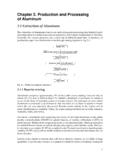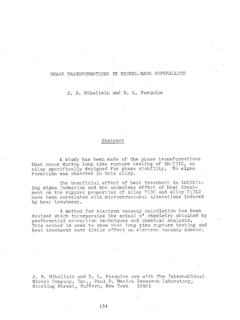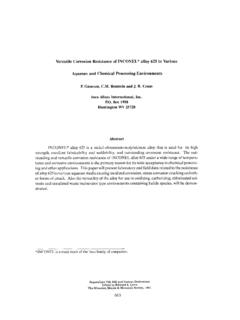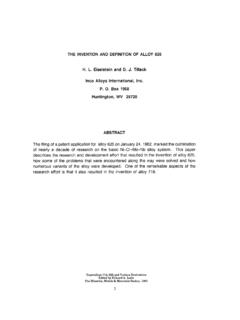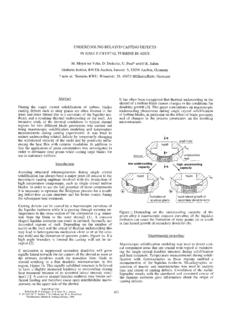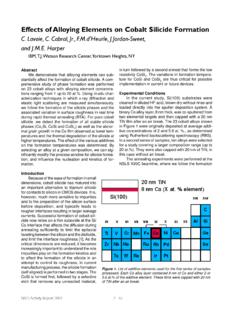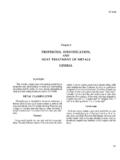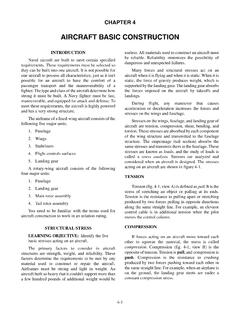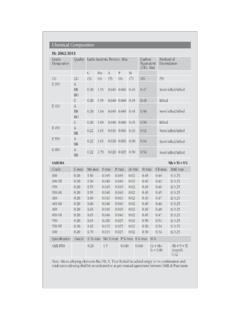Transcription of On the Diffusion of Alloying Elements in the Nickel-Base ...
1 Superalloys 2004. Edited by Green, Pollock, H. Harada, Howson, Reed, Schirra, and S, Walston TMS (The Minerals, Metals & Materials Society), 2004. ON THE Diffusion OF Alloying Elements IN. THE Nickel-Base SUPERALLOYS. Chong Long Fu, Roger Reed , Anderson Janotti and Maja Krcmar Metals and Ceramics Division, Oak Ridge National Laboratory, PO Box 2008, TN 37830, USA.. Dept of Metals and Materials Engineering, The University of British Columbia, 309-6350 Stores Road, Vancouver V6T 1Z4, Canada Keywords: di usion, di usion mechanisms, quantum-mechanical modelling, alloy design Abstract that the correlation factor which accounts for di u- sional jumps in the reverse direction should be in- The di usion of transition metal solutes in nickel has cluded in the model.
2 The results explain why some ele- been studied using quantum-mechanical rst principles ments for example Re have a strong e ect on the high methods, and the predictions compared critically with temperature properties of the superalloys, and provide the experimental data available in the literature. For insights for future alloy design e orts. the 4d and 5d rows which contain Ru and Re respec- tively, di usion rates are largest for Elements at the far Introduction west and far east of the d-block of transition metals. The calculations reveal that this is due to a signi cant The nickel -based superalloys are required to operate at barrier energy for solute-vacancy exchange for Elements elevated temperatures, often very close to their melting residing at the centre of the period, Ru and Re, de- point.
3 Under these conditions, a number of degradation spite their displaying atomic sizes which are closest to mechanisms can arise which are usually mediated by that of Ni. Thus it is demonstrated conclusively that the di usional processes. For example, creep deformation underlying electronic bonding controls the rate of di u- occurs at a rate dependent upon di usional rearrange- sion. Elements such as Ru and Re are amongst the most ments at dislocation cores [1]. Directional coarsening of dense and least compressible of the transition metals due the phase (the so-called rafting e ect) requires mass to their con guration of electrons when alloyed with transport on the scale of the periodicity of the precipi- Ni this causes directional and incompressible Ni-Ru and tates [2].
4 Single crystal superalloys can interdi use with Ni-Re bonds to be formed which hinder vacancy migra- coatings applied to them [3] and oxidation occurs at a tion. These e ects dominate over any di erences in the rate which is di usion-controlled [4]. Clearly, the retar- vacancy-solute binding energy and any in uence of the dation of di usional processes is important if the very atomic radius of the solute. In this respect, the results best properties are to be attained. Despite this fact, disprove the traditional view that di usion of substitu- superalloy metallurgists know remarkably little about tional solutes is least rapid when the size mis t with the the rates of di usion of the substitutional solutes added host is the greatest.
5 The trends for the 3d row are also to their alloys. Indeed, the processes used to design studied, and it is shown that magnetism has a profound new alloys still tend to be rather Edisonian in their ap- e ect. Finally, if the theoretical results are to be ratio- proach, with considerable use made of trial-and-error nalised with the experimental data, it is demonstrated procedures. 867. However, recent work has quanti ed the rates of interdif- fusion of the 4d and 5d transition metals in nickel [5,6], see Figure 1, by analysing di usion couples exposed to elevated temperatures.
6 The concentration pro les ob- tained were measured using electron microprobe analy- sis and the interdi usion coe cients deduced using the Sauer-Freise method. Figure 2: Variation of measured [5] activation energy for interdif- fusion with Ni, with the pre-exponential coe cient D0 constrained to be 5 10 4 m2 /s. Note that the correlation factor f is taken to be unity. A remarkable and surprising result was found: alloy- ing additions taken from the middle of the transition metal block display the slowest rates of di usion, de- spite exhibiting atom radii which are the closest to that of nickel ( nm), see Figure 1.
7 Elements from the far west and far east of the transition metal block exhibit the greatest rates of di usion, although they possess the greatest lattice mis t with the nickel solvent. Both the second (4d) and third (5d) transition metal rows were found to display this e ect. Moreover, it was suggested that this dependence resides in di erences in the ac- tivation energy rather than the pre-exponential term, see Figure 2. Recently, it has been demonstrated that quantum-mechanical rst principles methods are capa- ble of rationalising these e ects [7]. In [5], the rst row (3d) transition metals were not con- sidered.
8 Indeed, it appears that no attempt has been made so far to identify a systematic correlation between the positions of the solutes in the d-block and the rates of interdi usion with nickel . Here, this situation is reme- Figure 1: Variation of measured [5] interdi usion coe cients died. To facilitate a critical evaluation of the modelling, with nickel for various substitutional solutes: (a) 4d row, (b) 5d various data have been collected and collated: for the row and (c) corresponding variation of the Goldschmidt radii for interdi usion of Ti [8], V [9], Cr [10], Mn [11], Fe [12], the solutes.
9 The atomic numbers of the 4d and 5d rows are given Co [10] and Cu [13] with the nickel host. Data for the at the top and bottom of (a) and (c) respectively. self-di usion of nickel are available in [14]. 868. Efvac,Ni + EV where Efvac,Ni is the vacancy formation energy in pure nickel and EV is the solute/vacancy binding energy. Thus . EfV. pv = Co exp (3). kT. where Co is a constant. It follows that . 2 Eb EfV. D = f a o exp Co exp (4). kT kT. which has the familiar Arrhenius form Figure 3: De nition of the di usion energy barrier Eb , for va- . cancy displacement along the < 110 > direction.
10 Filled circles: Q. D = f Do exp (5). solute atoms. Un lled circles: solvent atoms. Squares: vacan- kT. cies. with Do the pre-exponential term and the activation en- ergy being given by Q = Eb +EfV . Note that for reasons that will become apparent later in the paper, the cor- relation factor f is not included in the pre-exponential Background term Do . It is clear then that the activation energy for di usion depends upon the sum of two terms, one corre- The interaction of substitutional solutes with vacancies sponding to the barrier energy and the other the energy in a solvent such as nickel is in fact rather complicated for the formation of a vacancy next to the solute atom.

